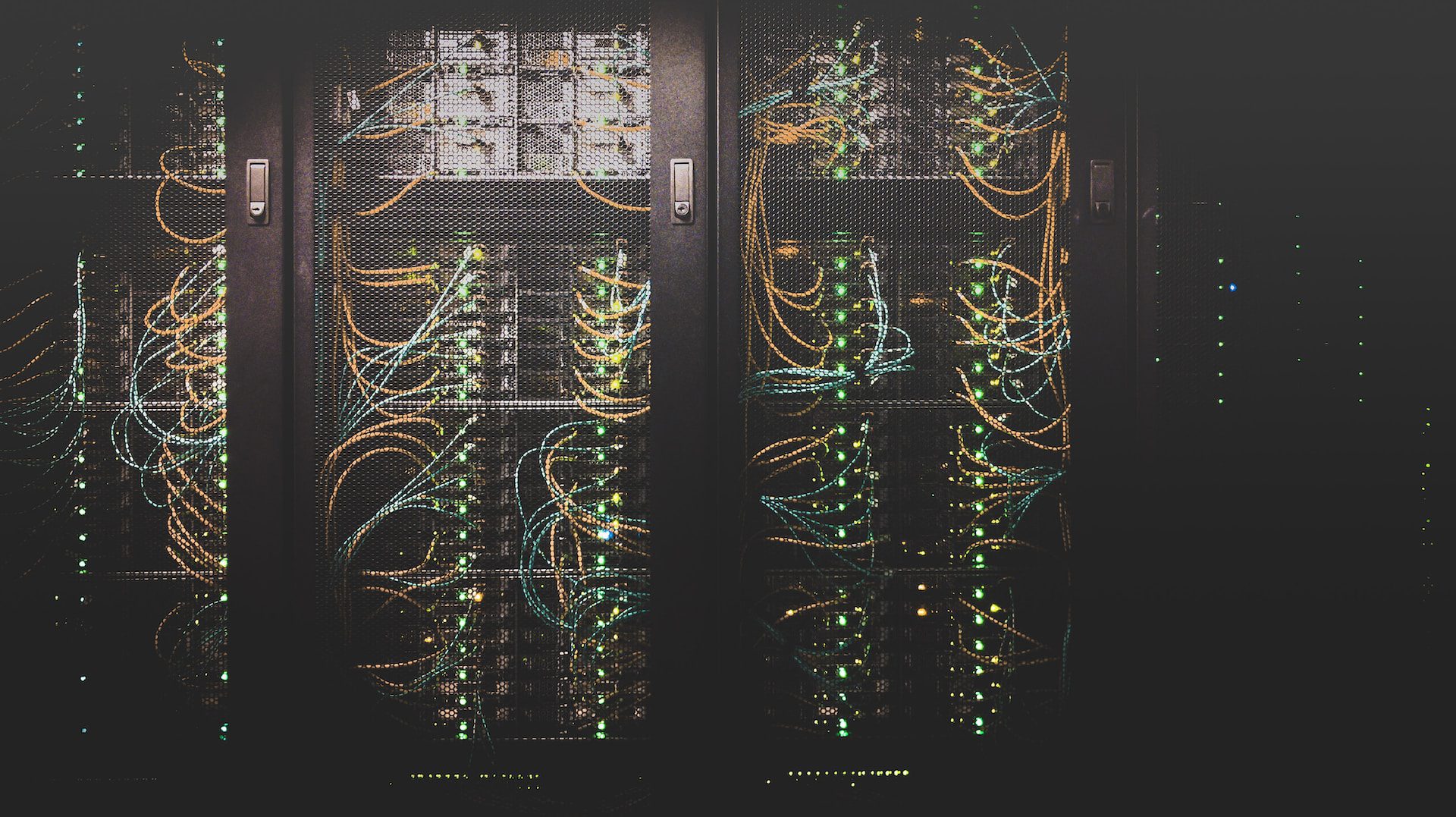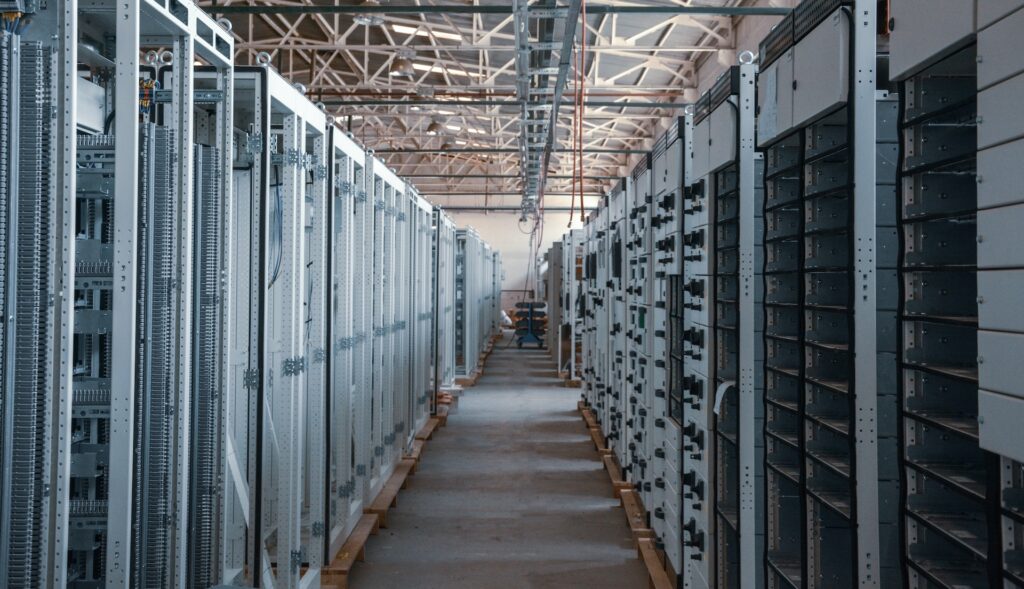01/15/2024 | Source Water | 12 MINUTE READ
Understanding Data Center Cooling Systems

In the dynamic realm of modern data centers, where technological complexities abound, one critical aspect stands out: efficient temperature control. The uninterrupted operation and safety of these intricate hubs rely on continually monitoring and managing environmental conditions. Among the paramount tasks faced by data center managers, maintaining the right temperature is pivotal to averting potential disasters.
As the beating heart of technological innovation, data centers house many advanced machinery that demands precise environmental conditions. A slight deviation from the optimal temperature and humidity levels can set off a chain reaction, damaging condensation within the data center. The repercussions are immense – from massive damage to the machines to disruptive downtimes. The imperative, therefore, is to navigate the cooling landscape with utmost care and employ cutting-edge technologies to keep data center temperatures at the right level.
This comprehensive guide delves into the intricate world of data center cooling systems. For those not intimately familiar with data center technology, this guide aims to demystify the complexities and shed light on the technologies that ensure seamless operation. From the fundamentals of data center environmental management to potential challenges, strategies for improving energy efficiency, and glimpses into the future of temperature management, we aim to provide a roadmap for understanding and optimizing data center cooling systems. Let’s embark on this journey to unravel the layers of sophistication that characterize the world of data center cooling.

Understanding Data Center Environmental Management
In the intricate ecosystem of data centers, environmental management plays a pivotal role in ensuring critical infrastructure’s seamless operation and longevity. This section will delve into the fundamental aspects of data center ecological control, encompassing a spectrum of factors, focusing on temperature and humidity regulation.
Definition and Scope
Data center environmental management extends beyond mere temperature control; it involves the orchestration of various factors to guarantee the efficiency and safety of the equipment housed within. Central to this management is regulating temperature and humidity levels to meet stringent operational requirements.
An innovative approach to enhance data center cooling efficiency involves recycling hot air expelled from IT equipment. Data centers can achieve a more sustainable and effective cooling mechanism by strategically repurposing this hot air within the facility.
Efficiency gains in data center cooling are closely tied to airflow management. Reducing bypass airflow, the time it takes for air to flow through a device is crucial. This practice, known as airflow management, aids in optimizing the cooling process, ensuring that air reaches the intended destinations in a controlled manner.
Recommended Temperature Range
Maintaining a balance in data center temperature is crucial, with recommended guidelines typically falling between 70 and 75°F (21-24°C). However, studies suggest that strictly adhering to lower temperatures may incur unnecessary costs. Atmospheric stratification introduces complexities, influencing the decision to keep temperatures lower than recommended. Striking the right balance is a multifaceted challenge in data center environmental management.
Ensuring proper rack hygiene is a proactive measure to prevent the leakage of exhaust air into the intake area. Strategies include blanking plates and fittings around the rack’s edges, floor, top, or direct air intake. Hot and cold aisle containment further prevents the undesirable mixing of air temperatures within server rooms.
Implementing containment strategies, such as segregating hot and cold aisles, adds another layer of precision to temperature control. This prevents the undesirable mingling of hot and cold air, optimizing the efficiency of the cooling infrastructure.
A nuanced understanding of these factors is essential in navigating the realm of data center environmental management. The orchestration of temperature and humidity control, coupled with innovative approaches like hot air recycling, lays the foundation for a robust and efficient data center cooling system. As we continue our exploration, we will unravel the challenges inherent in this sophisticated landscape and explore strategies for overcoming them.
Challenges in Data Center Environmental Control
As data centers evolve to meet the escalating demands of technological advancements, the landscape of environmental control presents a series of challenges. Addressing these challenges is crucial to ensuring data center cooling systems’ adaptability, scalability, and reliability. This section explores key obstacles faced by data center managers in the pursuit of optimal environmental control.

Adaptability and Scalability
One of the primary challenges in data center environmental control lies in the ability of cooling systems to adapt to changing needs. Predicting the characteristics of future loads is a complex task, making it difficult to guarantee that existing cooling systems can seamlessly accommodate increased demand. The adaptability of data center cooling systems is paramount to meeting evolving requirements.
As data center loads evolve, there’s a constant struggle to ascertain whether the cooling infrastructure can effectively meet the heightened demand. This necessitates flexibility and scalability in cooling systems to accommodate heat generation and dissipation fluctuations.
Other Key Challenges
- Availability and Reliability: Data center cooling systems’ uninterrupted availability and reliability are non-negotiable. Downtimes due to cooling failures can have severe consequences, making it imperative for cooling systems to operate with high availability and reliability. Ensuring continuous operation under varying conditions is a significant challenge.
- Life Cycle Costs: Data center managers grapple with the life cycle costs of maintaining and upgrading cooling systems. Balancing the financial aspects while ensuring optimal performance becomes a delicate task. Decisions related to upgrades, replacements, and maintenance impact the overall cost-effectiveness of data center environmental control.
- Maintenance and Serviceability: The complex nature of data center cooling systems requires meticulous maintenance and serviceability considerations. Ongoing challenges include routine upkeep, addressing potential issues promptly, and ensuring the serviceability of cooling infrastructure. The ability to perform maintenance without disrupting critical operations adds another layer of complexity.
- Manageability of Complexity: Managing the intricacies of data center cooling systems poses a significant challenge. The sheer complexity of these systems, coupled with the need for real-time adjustments, requires advanced management strategies. Effectively navigating the manageability of these systems is essential for optimal performance.
In addressing these challenges, data center managers must strategically plan for the adaptability and scalability of cooling systems. The holistic consideration of life cycle costs, maintenance practices, and the manageability of system complexities is crucial for overcoming obstacles and ensuring the seamless operation of data center cooling infrastructure. As we explore strategies to enhance energy efficiency and delve into the future of data center temperature management, overcoming these challenges will remain at the forefront of data center environmental control efforts.
Improving Energy Efficiency
In an era where energy efficiency is paramount, data centers are under increasing pressure to optimize their operations. This section focuses on actionable strategies to enhance energy efficiency in data center cooling systems, acknowledging the significance of sustainable practices and cost-effectiveness.
Measurement and Management
- Energy Usage Measurement: The journey toward improved energy efficiency begins with precise measurement. Data centers must meticulously measure energy usage, particularly for non-computing functions such as cooling. Accurate metrics empower data center managers to make informed decisions and implement targeted improvements.
- Effective Airflow Management: Efficient airflow management is a cornerstone of energy-efficient data center cooling. By strategically containing hot and cold air, data centers can mitigate the risk of air mixing, optimizing the cooling process. The careful analysis, aided by thermal modeling and computational fluid dynamics, enables the formulation of optimal airflow management strategies.
Free Cooling Techniques
- Leveraging Free Cooling: Harnessing free cooling techniques presents a viable avenue for energy efficiency. Various forms of free cooling, including thermal reservoirs, low-temperature ambient air, and evaporative cooling, offer sustainable alternatives. Free cooling can significantly reduce the dependency on traditional, energy-intensive cooling methods, contributing to environmental conservation and cost savings.
- Flexible Temperature Settings: While the industry-standard temperature range for data centers hovers around 70-75°F, exploring flexible temperature settings can be beneficial. Many equipment manufacturers endorse higher temperatures, allowing data centers to operate cold aisles at 80°F or even higher. Consultation with equipment manufacturers to align temperature settings with optimal performance can lead to energy-efficient practices.
Technological Innovations
Integrating intelligent technologies, AI, and machine learning is a game-changer in data center cooling. As industry leaders like Google exemplified, intelligent temperature controls dynamically adjust cooling parameters in real time. This results in a reduction in heat output and a tangible decrease in cooling energy usage. The deployment of data center cooling robots further enhances efficiency by continuously monitoring temperature and humidity levels.
Future-Ready Approaches
Anticipating future technological innovations is a crucial tenet of operational sustainability. The ability of data centers to plan ahead and seamlessly integrate new technologies shapes their energy-efficient future. They are reducing reliance on traditional mechanical cooling in favor of broader free cooling techniques and positioning data centers for long-term sustainability.
In the pursuit of improved energy efficiency, data centers must adopt a holistic approach. Each strategy contributes to a more energy-efficient and environmentally conscious data center ecosystem, from embracing innovative technologies to leveraging free cooling alternatives and fostering operational sustainability. As we look toward the future of temperature management, these initiatives lay the groundwork for a resilient and sustainable data center landscape.

The Future of Data Center Temperature Management
As the data center landscape continues to evolve, the future of temperature management is poised for transformation. In this section, we explore the anticipated trends and innovations that will shape the way data centers approach temperature control, reflecting a blend of traditional methodologies and emerging technologies.
Evolutionary Trends
- Blending Traditional and Alternative Cooling: The trajectory of data center temperature management suggests a harmonious blend of traditional and alternative cooling methods. While refinements in existing technologies are expected, data centers will likely incorporate alternative approaches like geothermal and evaporative cooling. This synthesis aims to optimize efficiency while diversifying cooling methodologies.
- Geographical Considerations: The geographical location of data centers will gain prominence. Choosing sites with cooler climates or proximity to cold-water sources will become a strategic decision to enhance energy efficiency. This approach aligns with the broader industry goal of minimizing environmental impact and reducing operational costs through natural climate advantages.
Temperature Tolerance of Next-Gen Servers
- Increased Temperature Tolerance: A noteworthy trend in data center temperature management revolves around the temperature tolerance of next-generation servers. Manufacturers are designing servers with the capacity to operate at higher temperatures effectively. This shift allows data centers to explore elevated temperature settings, translating into potential energy savings and reevaluating industry-standard temperature norms.
- Liquid Cooling Dominance: Liquid cooling technologies are anticipated to gain prominence, evolving from niche applications to widespread adoption. Innovations like total immersion and direct-to-chip cooling offer increased efficiency and targeted heat dissipation. Liquid cooling’s cleaner, scalable, and convenient nature positions it as a leading contender for future data center temperature management.
Integration of Smart Technologies
- The pervasiveness of Smart Technologies: Integrating intelligent technologies, artificial intelligence (AI), and machine learning will become more pervasive in data center temperature management. Real-time monitoring, adaptive controls, and predictive analytics will empower data centers to dynamically adjust cooling parameters, optimizing efficiency and reducing energy consumption.
- Enhanced Robotics for Monitoring: Data center cooling robots equipped with advanced sensors and robotics will play an expanded role. These robotic systems will autonomously navigate server cabinets, collecting temperature and humidity data. Creating comprehensive heat maps without manual interventions enhances monitoring accuracy and contributes to proactive temperature management.
Operational Flexibility and Sustainability
- Operational Flexibility: Future data centers will prioritize operational flexibility, allowing seamless adaptation to evolving technologies and client needs. The ability to scale cooling systems, integrate new methodologies, and implement changes without disrupting critical operations will define the success of data center temperature management.
- Sustainable Practices: Sustainability will remain a core focus, with data centers striving to minimize their environmental footprint. Energy-efficient practices, reliance on renewable energy sources, and a commitment to eco-friendly cooling methods will be integral to the ethos of future-ready data centers.
In conclusion, the future of data center temperature management unfolds with a tapestry of innovation and adaptability. From embracing liquid cooling dominance to harnessing the potential of intelligent technologies and prioritizing sustainability, data centers are poised for a dynamic evolution in their approach to temperature control. As the industry continues to push boundaries, the synthesis of tradition and innovation will shape a resilient and forward-looking data center landscape.

Conclusion
In the dynamic realm of data centers, where technology evolves at an unprecedented pace, the significance of effective temperature management cannot be overstated. As explored throughout this comprehensive guide, data center cooling systems play a pivotal role in ensuring these technological hubs’ optimal performance, safety, and efficiency.
From understanding the fundamentals of data center environmental management to navigating the challenges inherent in environmental control, the journey leads us to a future brimming with possibilities. The relentless pursuit of energy efficiency has ushered in innovative strategies, incorporating intelligent technologies, free cooling techniques, and flexible temperature settings.
The challenges faced by data centers, including adaptability, scalability, and ongoing maintenance, have spurred the industry to explore novel solutions. The integration of liquid cooling technologies, the increasing temperature tolerance of next-gen servers, and the burgeoning role of intelligent technologies are reshaping the landscape of data center temperature management.
The future promises a synthesis of tradition and innovation. Data centers are positioned for heightened efficiency due to the coexistence of traditional and alternative cooling methods and a strategic emphasis on geographical advantages. The temperature tolerance of servers is on an upward trajectory, accompanied by the dominance of liquid cooling technologies that offer cleaner, scalable, and more effective solutions.
Operational flexibility and sustainability emerge as guiding principles for the future-ready data center. The seamless adaptation to evolving technologies and a commitment to eco-friendly practices set the stage for a resilient and environmentally conscious data center landscape.
The journey through data center temperature management is a testament to the industry’s ability to evolve, adapt, and embrace the forefront of technological innovation. As data centers continue to push boundaries, the synthesis of tradition and innovation will define a landscape where efficiency, sustainability, and operational excellence converge. The future of data center temperature management is not just a destination but a dynamic and ever-evolving trajectory toward a more efficient and sustainable digital future.
Posted by Joshua Samp on January 15, 2024
Sensorex is a global leader in the design and manufacture of quality sensors for water quality and process applications. The company offers more than 2000 sensor packages for pH, ORP, conductivity, dissolved oxygen, free chlorine, chlorine dioxide, UV transmittance and other specialty measurements, as well as a full line of sensor accessories and transmitters. Its expert technical support engineers solve analytical sensor challenges with custom designs and off the shelf products.




